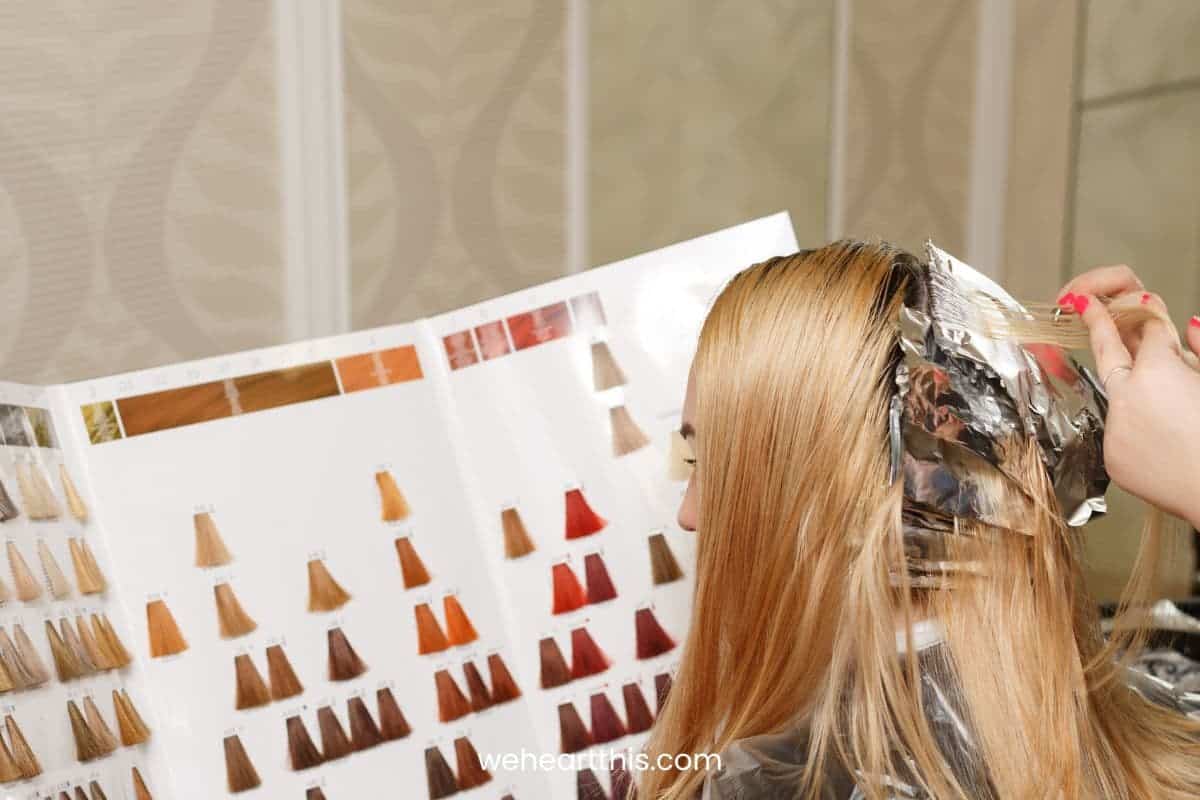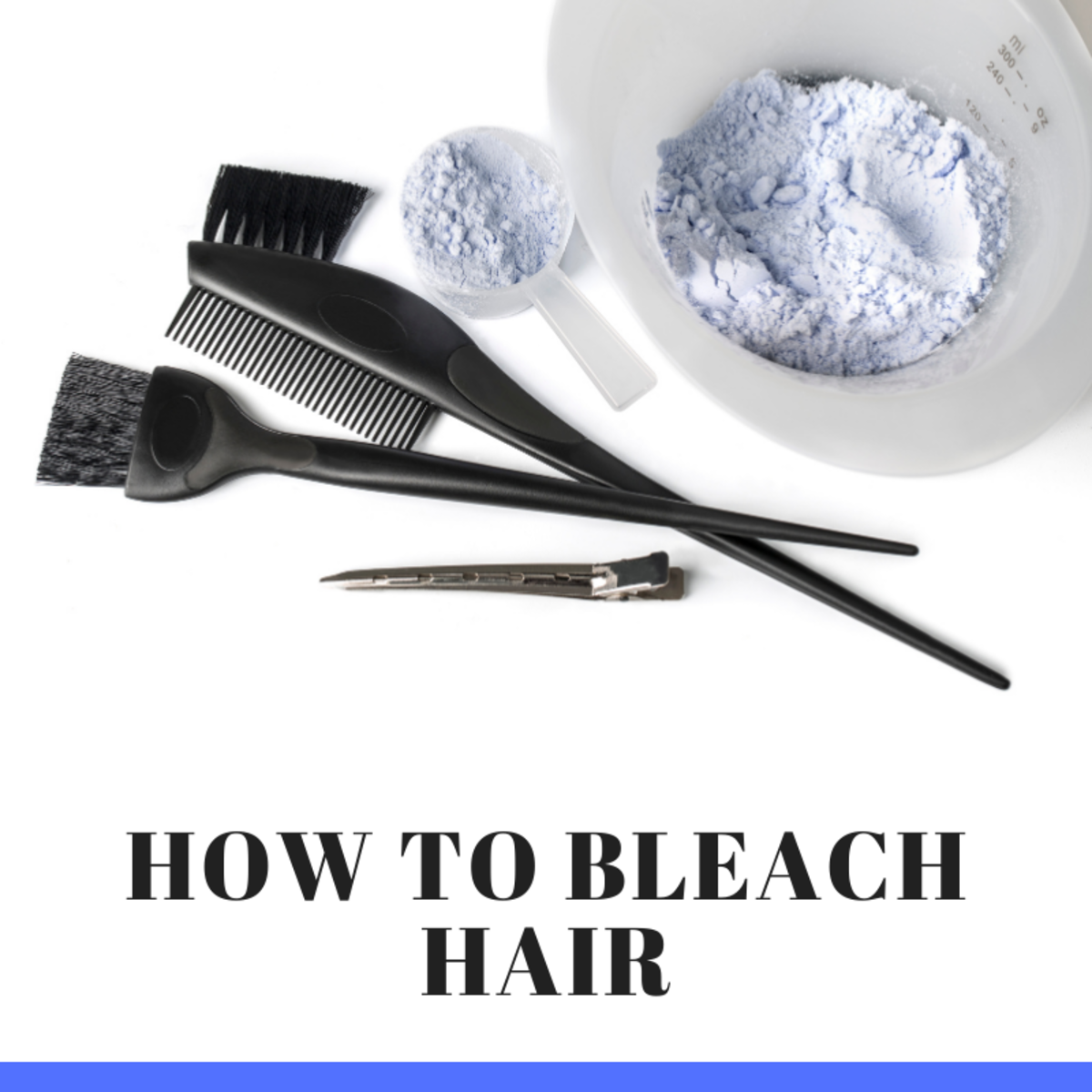Table Of Content

Using too high percent of developer will cause the hair color to lift too fast causing damage to the hair cuticle,” says Faye. Rez adds that leaving the bleach on too long—even with a lower volume processor—can also contribute to damage. If you do decide to go the at-home bleach route, follow the directions closely and monitor the lightening process with diligence. Whether you’re just highlighting or bleaching all over, Faye says that hair damage from bleach is caused by overprocessing or processing incorrectly. A DIY bleach job gone wrong can lead to frizzy, parched, straw-like hair.
How to (Safely) Bleach Your Hair At Home
How to Use Hair Lightener to Brighten Up Hair Fast - Woman's World
How to Use Hair Lightener to Brighten Up Hair Fast.
Posted: Thu, 18 Apr 2024 07:00:00 GMT [source]
Due to its strength, the product is recommended for off scalp applications using a 10 or 20 volume developer. If, however, you do have luscious, healthy, resistant hair, you may need to use a 30 or 40 volume developer. Claiming to lift up to 7 levels, while lower than Blondme, it means it’s also more gentle on the hair.
How To Bleach Your Hair at Home and Keep Your Blonde Bright
Friends of Teen Who Broke Neck Show Their Support by Bleaching Their Hair - PEOPLE
Friends of Teen Who Broke Neck Show Their Support by Bleaching Their Hair.
Posted: Wed, 27 Mar 2024 07:00:00 GMT [source]
If you want to go more than a couple of tones lighter, you’ll probably need to bleach your hair. Hair bleaching, is the practice of lightening the hair color mainly for cosmetic purposes using bleaching agents. Bleaching can be done alone, combined with a toner, or as a step for further hair coloring. The most common commercial bleaching agents in use are hydrogen peroxide and persulfate salts, but historically other agents such as sulfuric acid, wood ash, lye and hypochlorite bleach were used.
Top tips for bleaching your hair at home
According to the Cleveland Clinic, the chemicals involved in the bleaching process can strip the protective fibers and oils from the hair. When this happens, hair becomes weaker, thinner, and more vulnerable to dryness and damage. If you get orange hair after bleaching, you need to either use a stronger developer, keep it in your hair longer, or tone your hair lighter brown or red and schedule a gradual transition to a lighter color. You also need to do a strand test and nurture your hair to bring it to its best condition. Apply toner to the hair to achieve the right tone for your hair, but only use it if the bleach causes the hair to appear too light, ashy, or brassy or if you want to add cool or warm tones to your hair. Shampoo the hair with a gentle shampoo until the bleach runs out thoroughly.
Step 2: Gather your materials
Bleaching agents cause your hair cuticles to swell making your hair look more voluminous after a bleaching session. Some people confuse hair bleaches with those used for household purposes. Remember that what you use for cleaning laundry and sanitizing surfaces are either sodium hypochlorite bleaches or oxygen bleaches. It's true that such household bleaches also use the process of oxidation to whiten clothes and surfaces, but they are much more toxic and corrosive than hair bleaches and should never be used on your body. Once you’ve safely bleached your hair at home, preserve your new hair color by adapting your haircare routine to suit your boxed hue. When you’re able to get to the salon again, Tang recommends asking your stylist for the #Mydentity #Myhero Collagen Treatment to help with hair elasticity, as well as an Olaplex treatment for strengthening.
Post-Bleaching Hair Care

“The condition the hair is left in is the most important factor,” Jackie says. If you do not want warm tones in your hair, you can bleach it with a toner. Replace the bleach with the toner and follow all of the steps listed above. Alternatively, you can use a toning shampoo to remove the warm tones from your hair.
Clairol Professional BW2 Lightener
The ratio of peroxide developer to toner formula is variable depending on the products you’re using. For the specific toners I use, it’s usually one part toner to two parts developer. Once you’ve shampooed adequately, apply a deep conditioner or moisturizing treatment mask.
Coconut Oil Is Your Best Friend
This is beneficial for those who only want to lift their color a few levels, but that doesn’t necessarily mean it’s a good idea. Wet hair is more fragile than dry hair (meaning there is more room for damage). Opting for a hair bleach kit can simplify the bleaching process, especially if you’re a novice.
Make sure you follow up with your stylist.
The pheomelanin is more difficult to take out of your hair, potentially leading to more bleaching sessions. Another way to treat your hair and avoid damage is to use specialized products such as Olaplex. Bleaching hair other than on your scalp is a whole different ball game. The skin on your face, arms, and legs is more delicate and the hair thinner. It’s important to bleach on healthy unbroken skin, and when the pores are completely shrunk tight.
For one, you could book a professional hair appointment— which honestly might be the most sensible solution. However, if you’re trying to save a few coins or if you simply don’t have time to spend all day in a salon chair, perhaps you've come to the conclusion that bleaching your hair at home is the only option left. The week after bleaching your hair, you need to commit to deep conditioning your hair every day. This will help keep your hair hydrated, and looking and feeling healthy.
I’ve also found a scalp brush like Conair Detangle and Go Shower Massage Brush ($6), to ensure I’ve gotten any grittiness from the bleach out of my hair. Eumelanin is what gives the main color of the hair, we perceive it as blacks, browns, and blondes. The more melanin the darker the color, and the fewer melanin compounds are found in the hair shaft the lighter (more blonde) the color.
If you got a whole kit such as the Manic Panic Flash Kit, then all you need is an old t-shirt to wear, a towel for potential spills and drips, and a toner or hair dye. Before you do anything, check how your hair will react to the bleaching process by performing a strand test as previously described. Depending on the result you want to achieve, if you have colored your hair before, you have the option of using a color remover, bleach, or both. The included preconditioner contains witch hazel and alcohol to shrink the pores in order to minimize the irritation to the skin. The bleach itself contains mineral oil, aloe extract, and tocopherol (vitamin E), which will ease the irritation and prevent excessive skin dryness after the treatment.
Other key factors to consider are your desired level of lightness and your base color. Subtle changes don’t require as much processing time as dramatic lightening transformations would. This is especially true if you’re starting with a dark brown to black base.
Search results are sorted by a combination of factors to give you a set of choices in response to your search criteria. “Preferred” listings, or those with featured website buttons, indicate YP advertisers who directly provide information about their businesses to help consumers make more informed buying decisions. YP advertisers receive higher placement in the default ordering of search results and may appear in sponsored listings on the top, side, or bottom of the search results page.
Unlike hair colors, bleaching agents penetrate the cuticle layer of your hair, making it more prone to damage. If not done properly, bleaching could severely affect your hair quality. If you still want to bleach your hair at home, use a hair bleaching kit, and follow the instructions very carefully. Investing in a hair bleaching kit is better than trying to piece together what you need. Your level is determined by the amount of natural pigment, aka melanin, each strand contains.


No comments:
Post a Comment